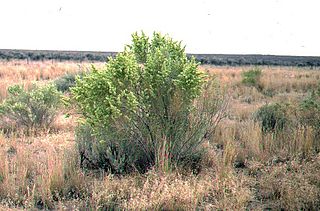
Atriplex canescens is a species of evergreen shrub in the family Amaranthaceae native to the western and midwestern United States.

Juniperus monosperma is a species of juniper native to western North America, in the United States in Arizona, New Mexico, southern Colorado, western Oklahoma (Panhandle), and western Texas, and in Mexico in the extreme north of Chihuahua. It grows at 970–2300 m altitude.

The monotypic genus Anemopsis has only one species, Anemopsis californica, with the common names yerba mansa or lizard tail.

Lithospermum incisum is a species of flowering plant in the borage family known by several common names, including fringed puccoon, narrowleaf stoneseed, fringed gromwell, narrowleaf puccoon, and plains stoneseed. It is native to much of central Canada and the United States, where it is known from many types of habitat, but particularly piñon-juniper woodland. It is a hairy perennial herb growing from a taproot and woody caudex. It produces a cluster of stems up to about 30 centimeters long. The stems are lined with narrow, pointed leaves up to 6 centimeters long. The slender, trumpet-shaped flowers are pale to bright yellow or gold, and may approach 4 centimeters long. The corolla face is 1 to 2 centimeters wide, its lobes sometimes ruffled. The smaller cleistogamous (closed) flowers are the main producers of seed.
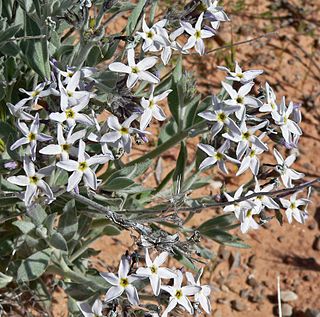
Amsonia tomentosa is a species of flowering plant native to the southwestern United States and northern Mexico (Chihuahua). Its common names include woolly bluestar and gray amsonia.

Psilostrophe, the paperflowers is a genus of North American plants in the sneezeweed tribe within the sunflower family.
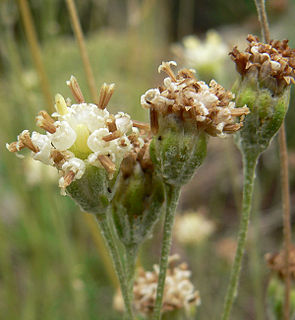
Hymenopappus filifolius is a North American species of flowering plant in the daisy family known by the common names fineleaf hymenopappus and Columbia cutleaf. It is native to western and central North America from Alberta and Saskatchewan south as far as Chihuahua and Baja California.

Krascheninnikovia lanata is a species of flowering plant in the family Amaranthaceae, known by the common name winterfat. It is native to much of western North America: from central Western Canada; through the Western United States; to northern Mexico.

Atriplex argentea is a species of saltbush known by the common names silverscale saltbush and silver orache. It is native to western North America from southern Canada to northern Mexico, where it grows in many types of habitat, generally on saline soils.
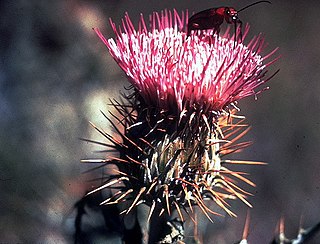
Cirsium ochrocentrum is a species of thistle known by the common name yellowspine thistle. It is native to the Great Plains of the Central United States and to the desert regions of the western United States and northern Mexico. Its range extends from eastern Oregon east to the Black Hills of South Dakota, south as far as the Mexican State of Durango.

Zinnia grandiflora is a species of flowering plant in the family Asteraceae known by the common names Rocky Mountains zinnia and plains zinnia. It is native to the southwestern and south-central United States and northern Mexico.
This is a list of plants used by the indigenous people of North America. For lists pertaining specifically to the Cherokee, Iroquois, Navajo, and Zuni, see Cherokee ethnobotany, Iroquois ethnobotany, Navajo ethnobotany, and Zuni ethnobotany.
See also Zuni ethnobotany, and Native American ethnobotany.
This is a list of plants and how they are used in Zuni culture.
Dalea compacta, with the common name compact praireclover, is a plant of the Southwestern United States.

Croton texensis, is a plant found in the United States.

Hymenoxys richardsonii, the pingue hymenoxys or pingue rubberweed, is a North American species of plants in the sunflower family. It is widespread across the western United States and western Canada from Arizona, New Mexico, and western Texas north as far as Alberta and Saskatchewan.
This is a list of plants documented to have been traditionally used by the Cherokee, and how they are used.
The Iroquois use a wide variety of medicinal plants, including quinine, chamomile, ipecac, and a form of penicillin.
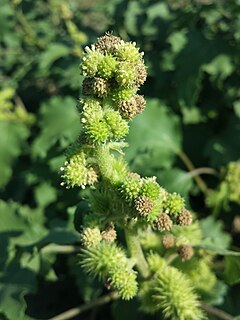
Xanthium orientale is a species of annual plant of the daisy family Asteraceae.














